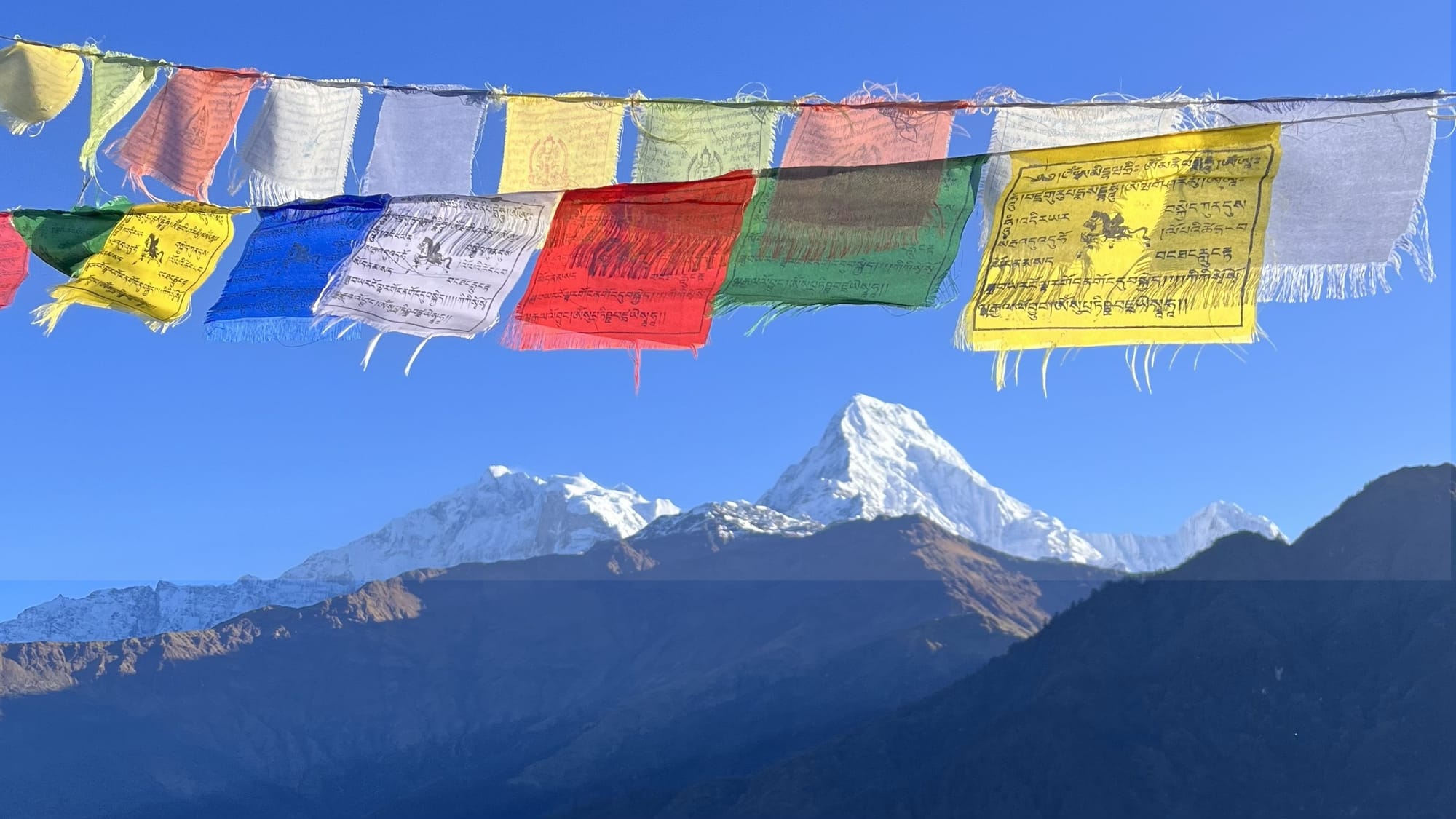
I’m not sure what I expected when I decided to book a trek in the Himalayas, but I’m pretty sure it wasn’t a lesson in resilience, community, and the beauty of slow travel.
It was mid-2020, when all travel had stopped, and the world for most of us became our own small home. Those who make their living guiding travelers had lost all their income overnight. They needed to do what they could to survive, and many were offering discounts to book future travel.
One such deal that crossed my radar was from Prime Himalayas, a small, locally owned and operated trekking and tour business in Nepal. They were offering 50% off a 9-day trip that included five days trekking in the Annapurna region, with no expiration date - buy now, travel later. I don’t think any of us knew at that time just how much later it would be before travel was possible again.
It turned out I had two years to research, plan, and dream about Nepal. I was happy to read about the tea houses that dot the trekking routes, which meant no need to pack and set up tents every day. And that, for a very reasonable additional cost, I could have a porter carry my heavy bag to each evening’s stop, so I only need to have the weight of a day pack. But I was still nervous to hear of the 3,000+ stone steps that waited to break me on the very first day’s climb. My attempts to prepare by spending just 10 minutes going up and down the stairs of my own house left me breathless and discouraged.
I shouldn’t have been. That’s not to say the climb wasn’t hard, but that it wasn’t an unconquerable challenge. With the patience of a saint and a mantra of “bistāri, bistāri” (slowly, slowly), our outstanding guide led our small group on the trip of a lifetime. I won’t take you day-by-day through the exact itinerary for this trip. You can get that on the Prime Himalayas website. Instead, I’ll share my experience here through the lens of:
- The Terrain
- The Lodging
- The People
- The Steps
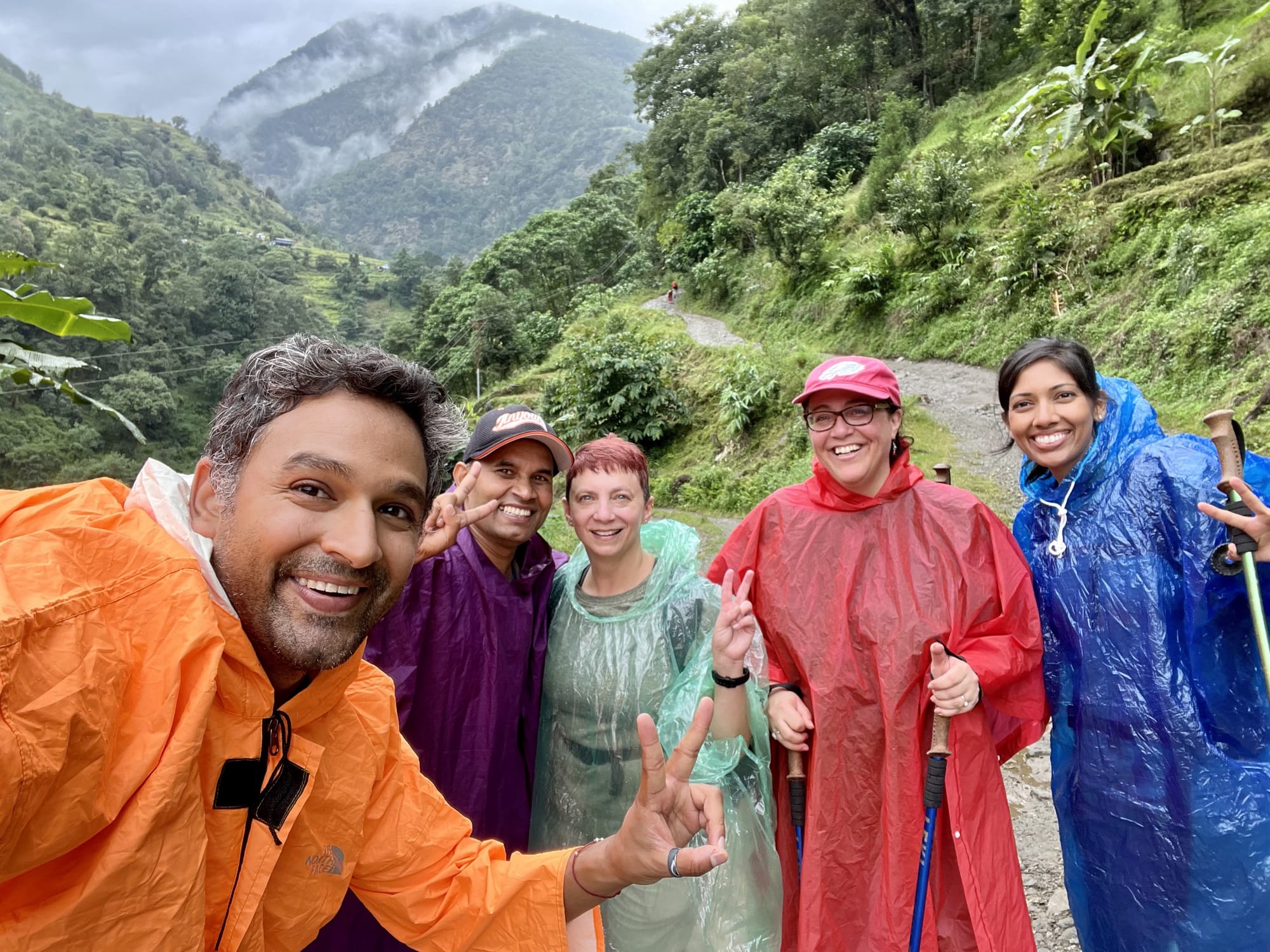
The Terrain
Remote, rocky, snow-covered mountain peaks are what first pop into mind when you think of the massive Himalaya mountain range, home to the world’s highest peaks. The very name Himalaya means "abode of snow" in Sanskrit.
But what I spent five grueling, glorious days climbing and descending was green, lush, tropical foliage interspersed with wow-inducing waterfalls. I spotted many familiar flowers such as dahlias, fuchsia, marigolds, impatiens, salvia, hydrangea, and the lantana that grows wild along the creek behind my home in Austin, Texas. But we were in the Annapurna trekking region, sticking to the lower elevations (3,500 to 10,500 feet) on what is known as the Poon Hill trek.
It was October, supposedly the end of the rainy season, but the rain ponchos did come out on our first day as we passed terraced rice paddy fields and grazing water buffalo. The foothills of the great mountains are dotted with fields of sorghum, beanstalks running up bamboo stakes, and hay stacked on tall poles on elevated platforms.
The ascent soon took us into lush rhododendron forests thick and green with ferns and other tropical foliage that reminded me of hiking on Moʻorea, an island in French Polynesia. At one point, an old tree stump covered in moss appeared like a welcome green velvet chair, but I dared not sit my tired bottom on it because of memories of a book my grandmother had given me about the tiny but diverse ecosystem that lived on a boulder.
Continuing to climb, we would often come into clearings where you could look over the clouds (yes, over the top of them) at dramatic mountain panoramas. The altitude is considered moderate, not high enough for most people to worry about altitude sickness, but the air is still thin. So I tested the limits of how many waterfall pics an iPhone can hold while taking every excuse to stop for photos as a chance to catch my breath. All while ignoring the sidelong glances from the caravan of mules that pass you carrying propane tanks and other supplies to the villages, which seem to wonder why you’re so winded on this trail they traverse with ease.
After days of climbing through these varied landscapes, the highest and most famous view on this trek is atop Poon Hill at about 10,500 feet (3,210 meters). Our group woke up under the light of a moon just three days past full and joined the throng of other trekkers relying on headlamps to light the way up so we could be there to watch the sun rise. Sipping hot chocolate or chai with Parle-G biscuits bought from the small stand atop the peak, we could see steam rising off the snowy tops of the Annapurna and Dhaulagiri ranges as the first rays of sun touched them.
Our guide told us his previous group had waited four days at Ghorepani and summited Poon Hill twice to try to get this view, and every time it was covered in clouds. We were fortunate.
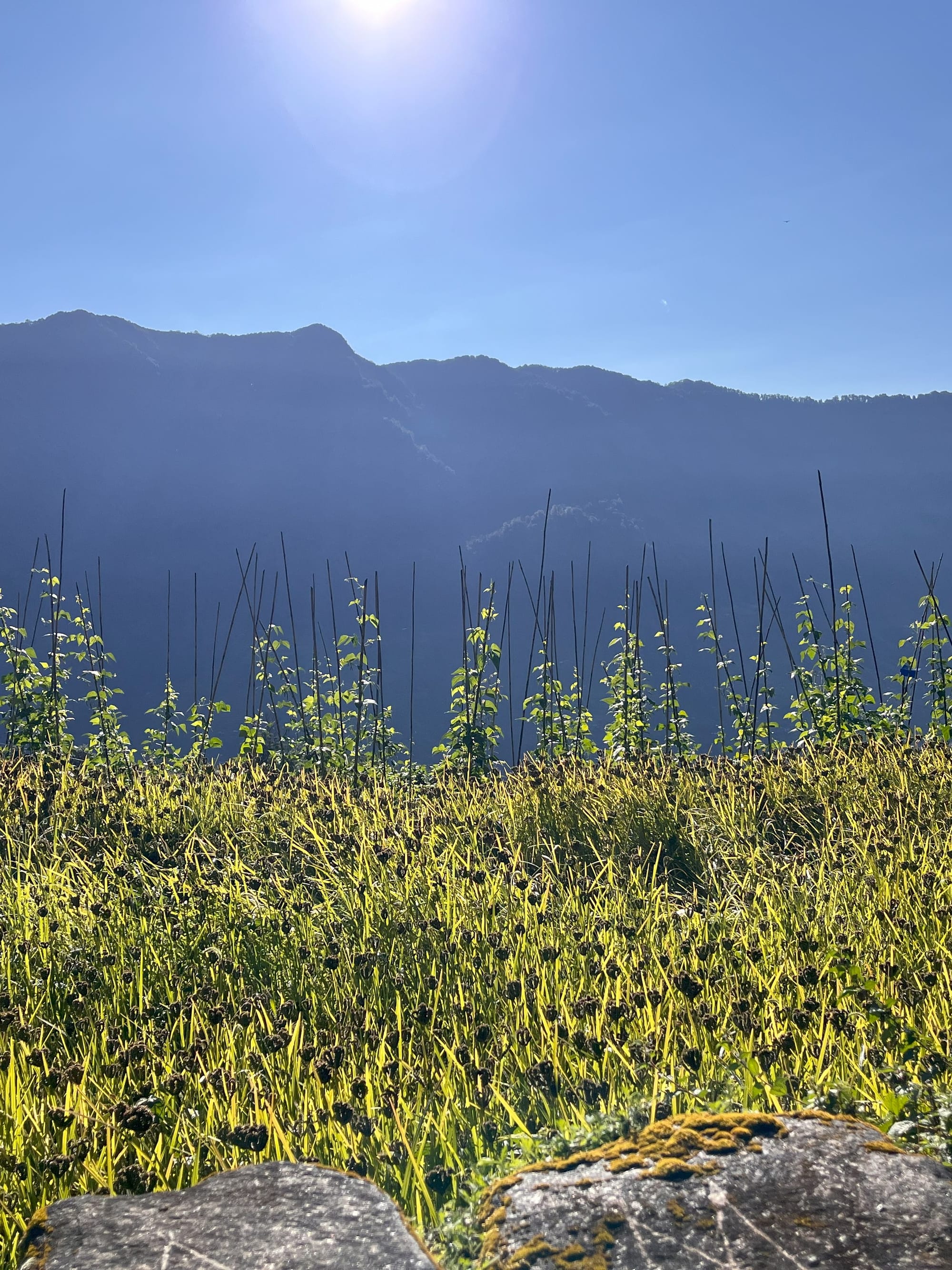
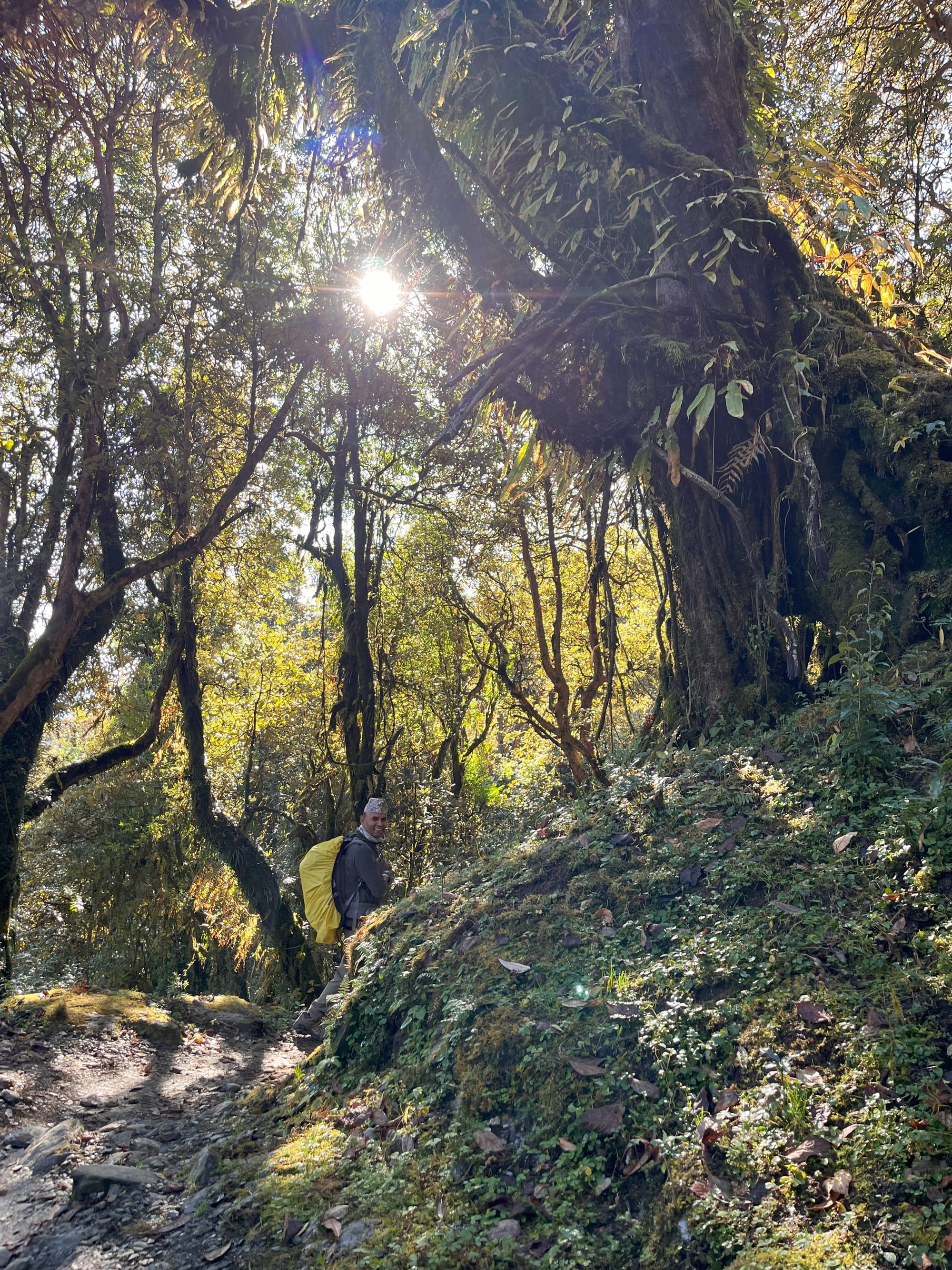

From fields to forests to mountains, every day on the trek brought new views. © Laura Pevehouse
The Lodging
One of the great things about trekking in Nepal is the infrastructure they have set up for it. You are out in the wilderness, but never far from the rustic comfort of a family- or community-run lodge. Called teahouses, they’re kind of like if a conventional hotel and a youth hostel had a baby. They are dotted all along the trail, but the higher up the mountains you go, the more back-to-basics they get.
Take the key to your room as an example. The first night on the trail, my room had the old-fashioned warded lock with an antique key style often associated with skeleton keys (although individual, not universal like a true skeleton key). The next night, the door was secured with a hasp and padlock. The third night, once inside my room, the lock was a 2x4 that you placed across the door.
That night, I noticed an image on the outside of my door that my fellow group members didn’t have. It was a creature that seemed to be a combination of man and beast covered in, I think, Sanskrit writing. My guide said it was a Tibetan sign designed to ward off evil spirits, so I had that extra level of protection in case the 2x4 didn’t hold them back.
The bathrooms are another example of how lodging changed with elevation. I’d been warned to expect Asian squat-style toilets, but most of the teahouses we stayed in had private en suite bathrooms with Western sitting-style toilets. What I hadn’t really been warned about, though, is how the shower head is just in the middle of the bathroom, so everything gets wet when you use it. At the lowest elevation, we could pay a few extra rupees to get hot water for the shower. Higher up, if you wanted a hot shower, the extra rupees would get you access to a separate shower area in the building. And at the top, hot water was no option, and my need to pee in the middle of the night meant navigating my way in the dark to a community bathroom with the squat toilets. The good luck sign on my door must have followed me, though, because I didn’t encounter any evil spirits along the way.
Or, I was just too tired to notice them. That evening, I’d been unable to keep my eyes open after dinner, which meant my time in the communal atmosphere all the teahouses create. Trekkers from around the globe gather in the dining rooms and around central stoves that provide heat and serve as a dryer for all of our socks and undies we washed in our sinks and hung on the line around them. You really can’t be self-conscious in a room filled with equally exhausted and yet exhilarated travelers swapping stories of what they have seen along the trail and how it compares to where they’re from.
One thing that elevation didn’t change about the trek was the omnipresence of Nepal’s fuel of choice for trekking - dal bhat. The lentil soup is typically served with rice and potatoes, providing plenty of carbs for energy and inspiring the catch phrase: “dal bhat power, 24-hour.” And while it was always available, it wasn’t always the same. Kind of like gumbo in my home state of Louisiana, or chili in my adopted state of Texas, each cook had their variation on the basic recipe.
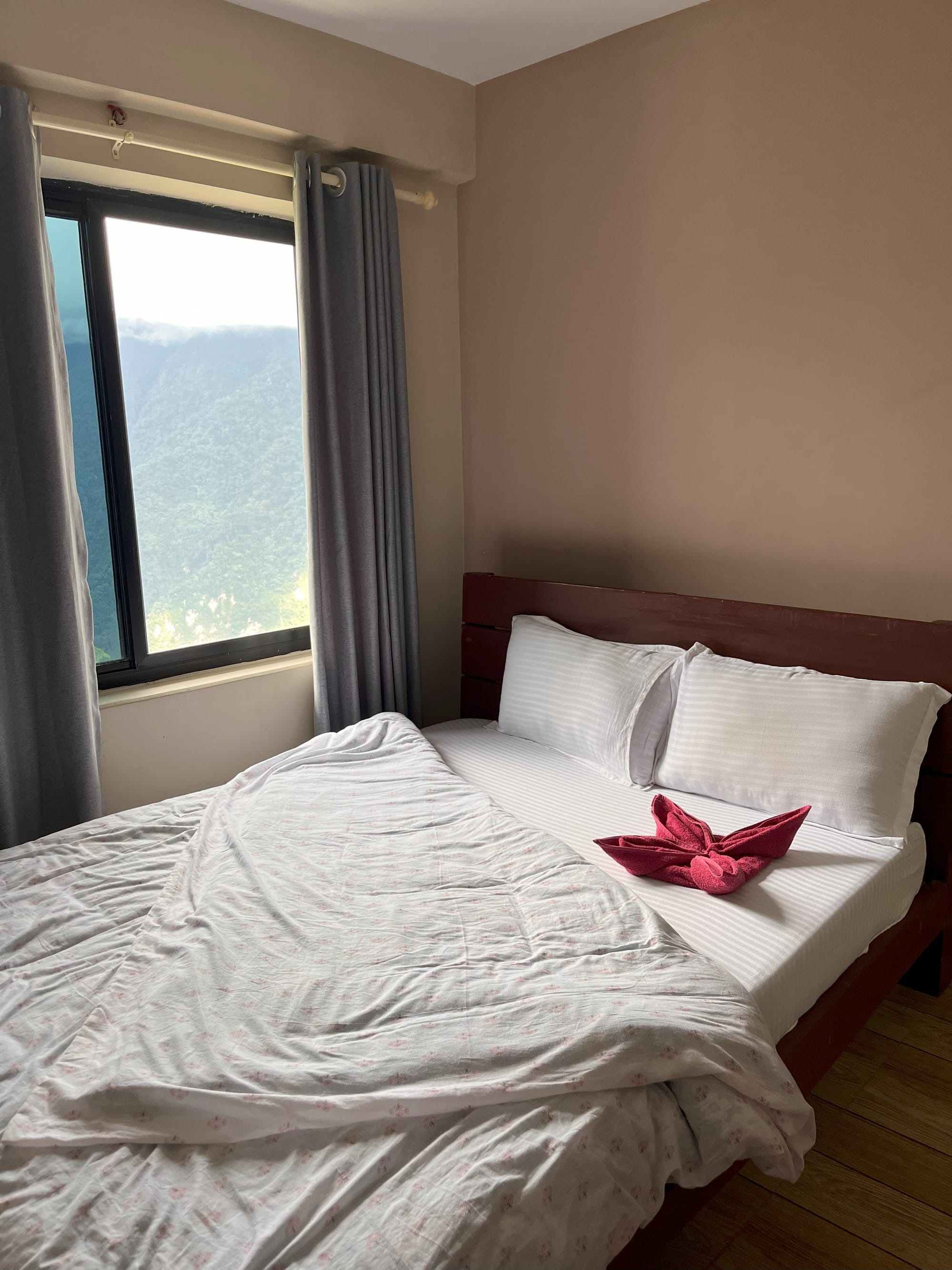
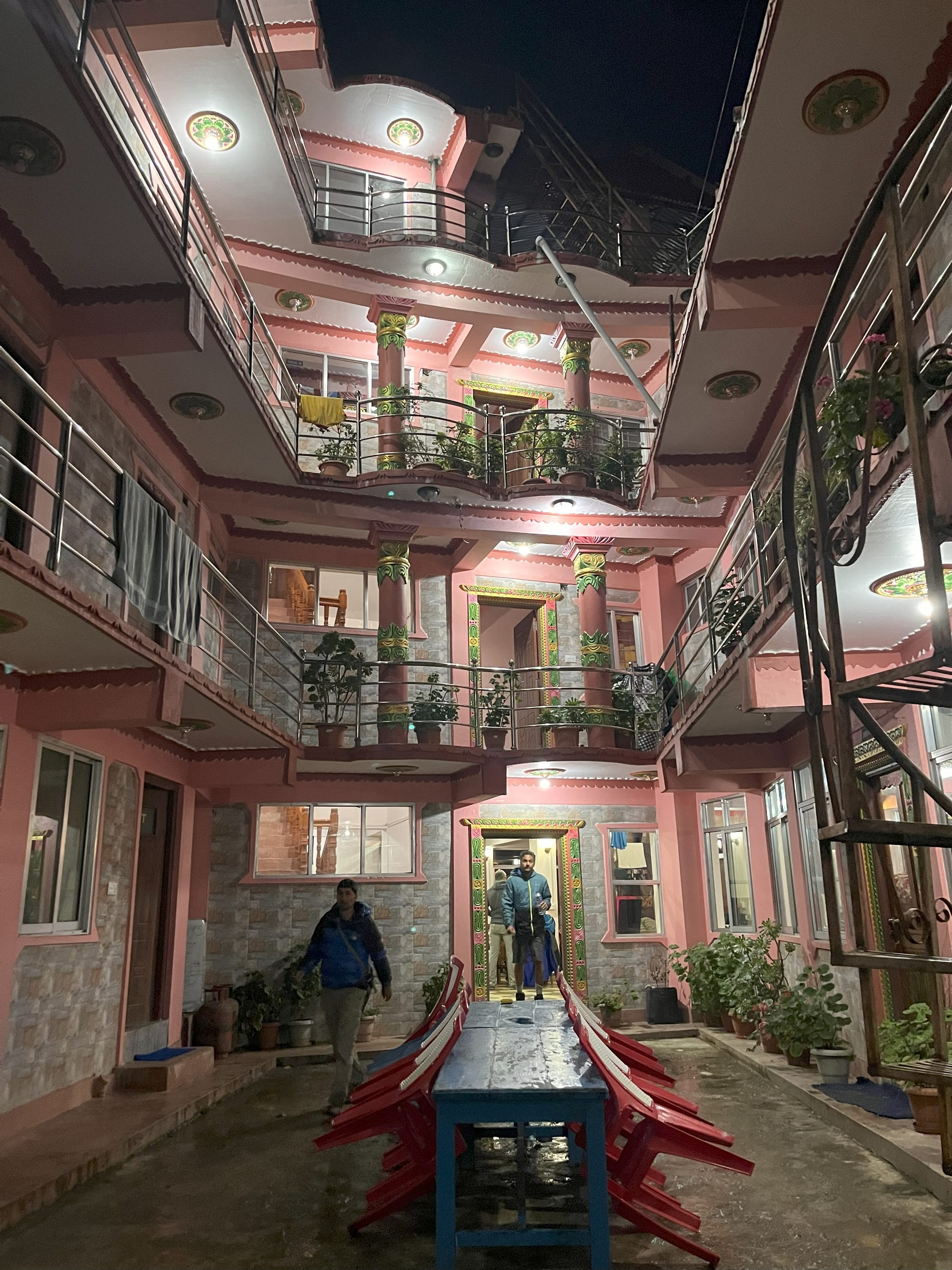
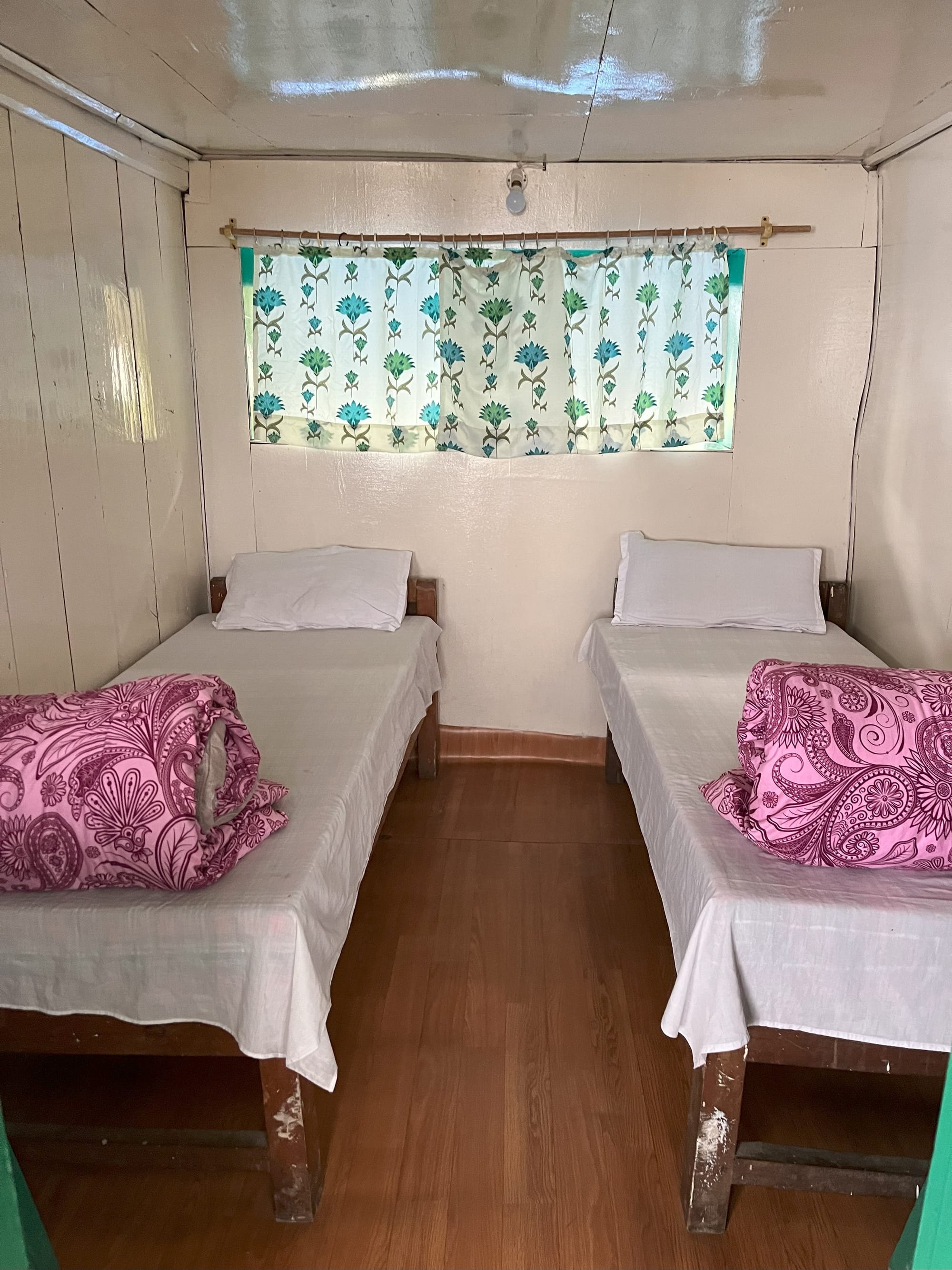
Teahouses along the Poon Hill trek offered a variety of accommodations. © Laura Pevehouse
The People
Those home-style cooks you encounter along the trail are part of the living tapestry of human tradition, family, faith, and friends interwoven with the rhythms of the mountains themselves.
The population of Nepal is approximately 29.6 million people, and based on my five days on the trail, I would guess nearly as many visitors pass through it each year. (The real number is something like 170,000 pre-pandemic.) I was able to converse with them all in English, although Nepali is the official national language, and the higher you go up into the Himalayas, the more likely you are to encounter Tibetan languages.
The majority of the Nepali population is Hindu, but the country definitely embraces the fact that the Buddha was born there and Buddhism is the second most common religion. On the trail, you’re more likely to see small family shrines than the large temples of the cities, but we did pass one Christian place of worship along our trek, and our guide said that both it and Islam are making inroads in the country. But I came away with a sense that no particular religion was as important to the people of Nepal as an overarching respect for each other and the world around them, embodied in a phrase they construct from the country's name to describe it: Never Ending Peace And Love.
This welcoming spirit was evident in small gestures throughout our trek. When we came across a large bamboo tower swing that probably stretched at least 8 feet over my head, I was intrigued. I’d spotted several on the bus ride from Kathmandu to Pokhara, too, and I asked our guide about them. He told me that these are temporary structures built for the Dashain festival. Swinging on them brings the community together in celebration and possibly brings good fortune. He said it was perfectly acceptable for those of us passing through to hop on and take a turn, so I jumped at the chance to recapture the youthful feeling of the wind flying by as I soared higher and higher.
The other travelers you meet along the trek are part of the experience, too. I met people from countries all around the globe of all different demographics. I met a 72-year-old man who was using this trek as a training session for the even higher elevations of a planned excursion to Annapurna Base Camp. His wife was along for this one, but planning to skip the next. Then there was a family with two young children who had hired a porter that carried their baby in a large basket on their back, and another porter with a basket chair for their toddler when he was too tired for walking.
When I noticed my porter stopping to take photos along the trail, I asked him how many times he’d made this trek, thinking it must still be new to him. He paused, gave it some thought, and said, “Probably about 100.” It was great to see that even after traversing these scenes so many times, he was still enraptured enough to stop and capture them with his phone camera.
He also joined in when our small group pulled out a deck of cards after dinner on our final evening of the trek for a rousing game of BS. Our laughter fed my soul, and it must have energized my body because when we heard loud music coming from the courtyard outside, instead of complaining it would keep me from sleeping, I went to see what the commotion was about.
What we found outside was a group of high school students on a field trip from another part of Nepal hanging around a fire pit and blasting Bollywood tunes. When they learned that some of my companions were big fans, a friendly dance competition broke out, and I tried my best to remember some of the steps I’d learned during my brief stint taking Bollywood dance lessons.
It was a testament to the power of dance to bring people together, and the power of Advil to keep me moving four days into this journey.
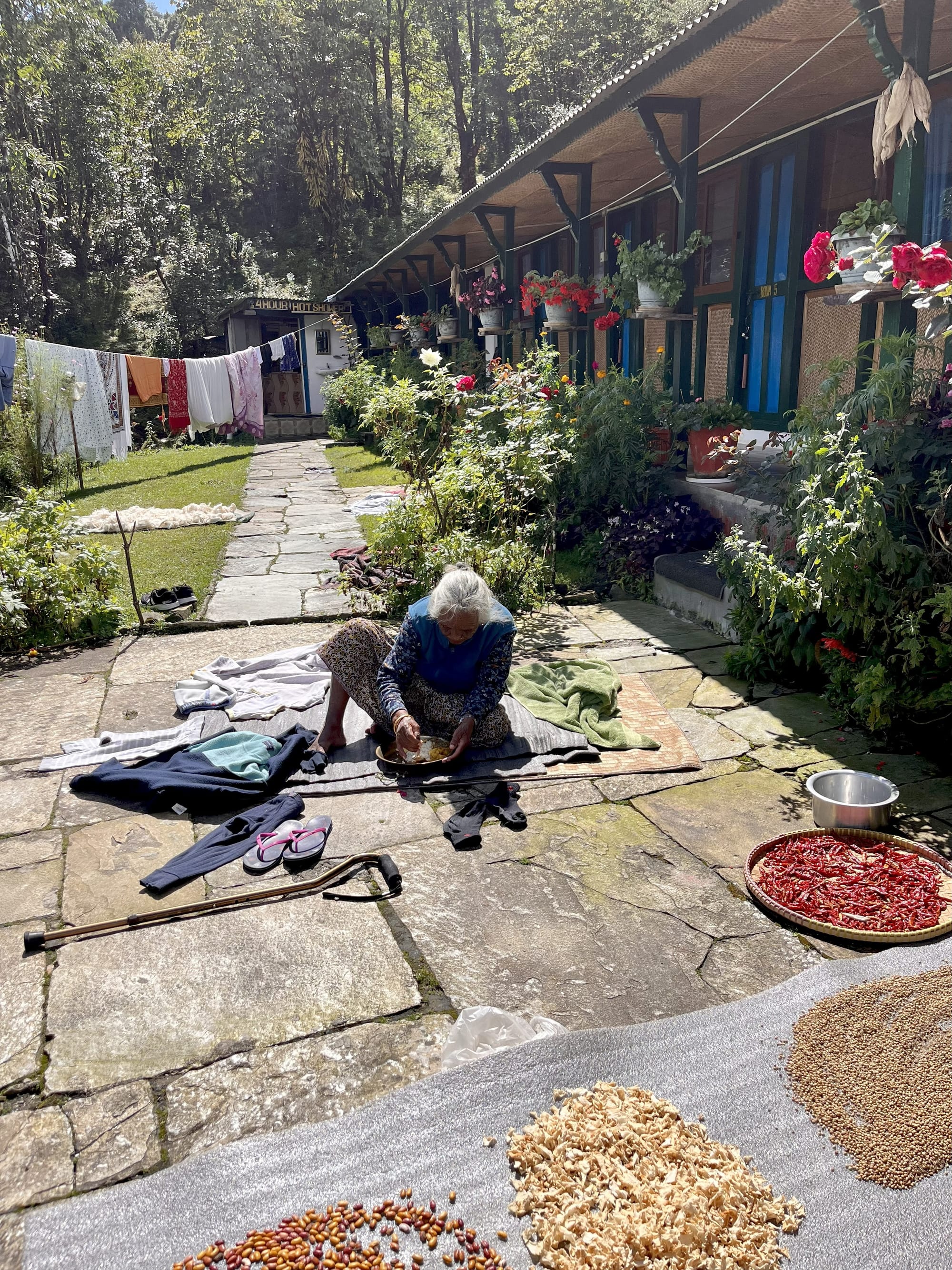
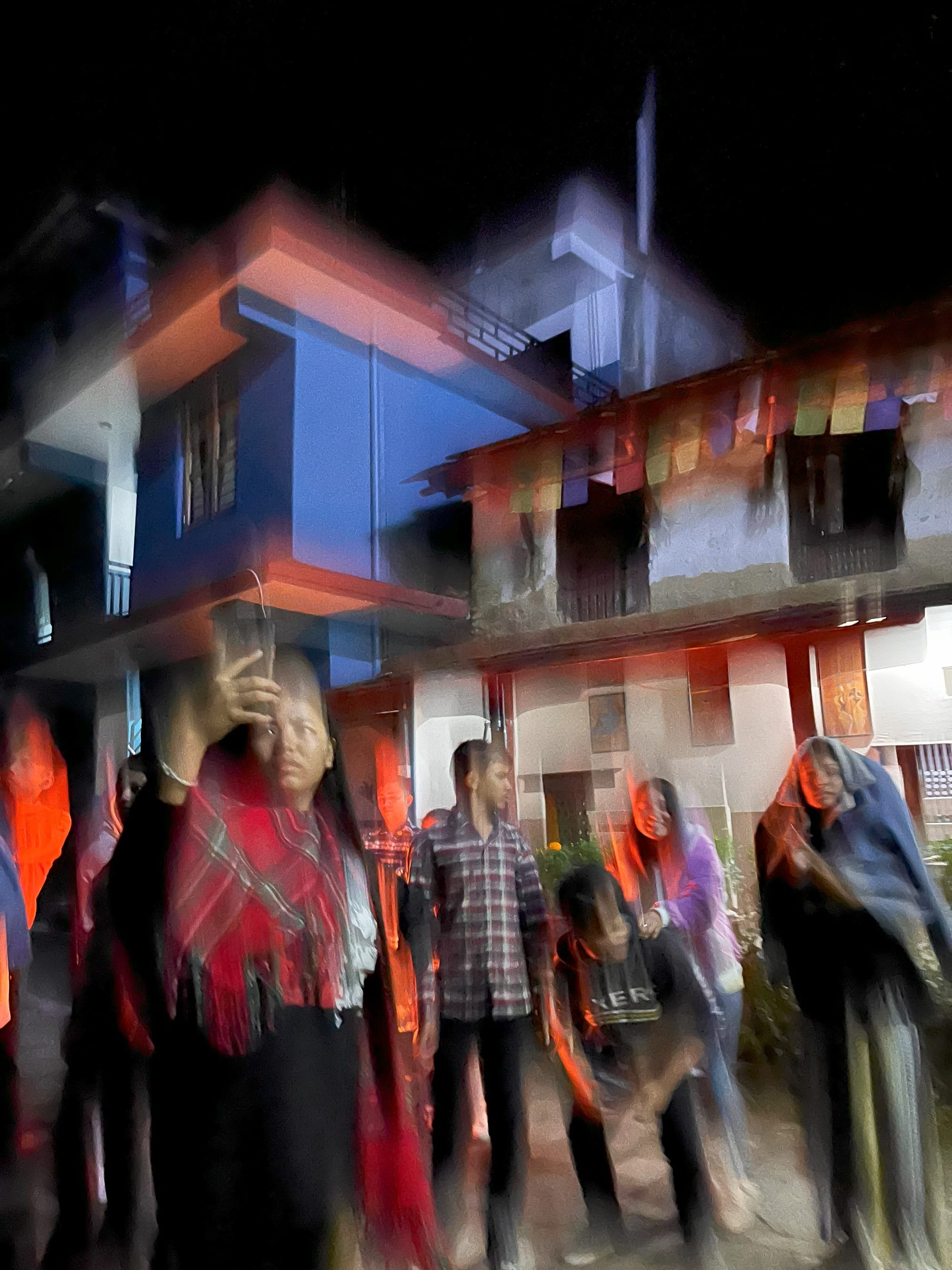
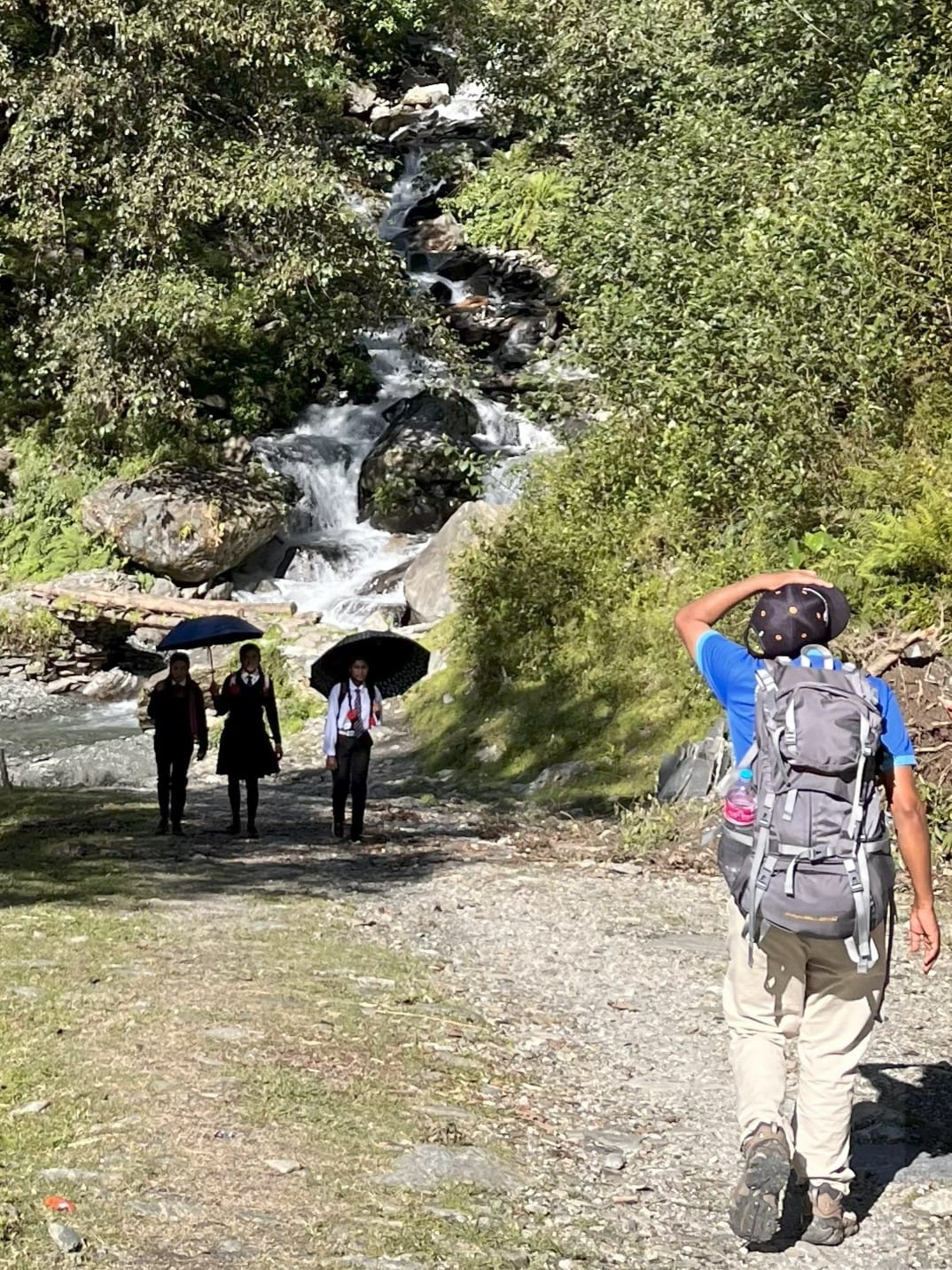
An older woman dries grains and clothes, students on a field trip dance in the cool evening, and local students head to their village school, passing trekkers on the trail. © Laura Pevehouse
The Steps
The Poon Hill trek is considered a pretty easy one compared to the full Annapurna Circuit or Everest Base Camp. There are no technical skills required, and the altitude is moderate for the Himalayas. I did it without any special training beyond the average 2 miles I was already walking/running 3-5 days a week around my low altitude, flat neighborhood in Austin.
But that’s not to say it was easy.
To reach our first night’s teahouse, we had to climb around 3,000 stone steps. If the average number of steps between floors is 14, that equals climbing from the first to the second floor in your house 214 times. Even taking it slowly as our guide encouraged, I had to stop often and catch my breath - usually my sign to do that would be when I could feel my heart pounding in my head.
Pushing through this was one of the times that being part of a group was better than going solo. Beyond encouraging each other with words of affirmation, chatting about our favorite episodes of The Amazing Race was a welcome distraction from counting steps. And it was a round of the alphabet game - taking turns naming places we’d traveled to - that pulled me through the final steps.
The trail is well-maintained but can become slippery with mud, especially during the monsoon season, and with manure from the mule trains that are an integral part of the lifeblood of the region. I was there at the end of the monsoon season, and twice we encountered areas where mudslides had impacted the trail, too.
We would walk for as long as 8 hours a day, often over wet, rocky, and uneven paths, across creeks and suspension bridges, and through dense forests. At the lower levels, we were sweating in shorts and t-shirts under rain ponchos, while I watched the sun rise at our highest point wearing thermal underwear, pants, a puffy coat, and hat and gloves.
Everything I’d read in preparation told me that I should have trekking poles, so I bought a pair in Kathmandu, where many merchants are prepared to supply all the trekkers’ needs. I sprang for the 4,000 rupee (about $30) pair because they folded up smallest, and the lighter the pack the better. But I had never hiked with poles before and found them awkward. Using only one instead of two proved easier. It came in most helpful for me on the descent when the risk of slips and falls brought on a whole new set of challenges. Going down, poles act as brakes and anchors.
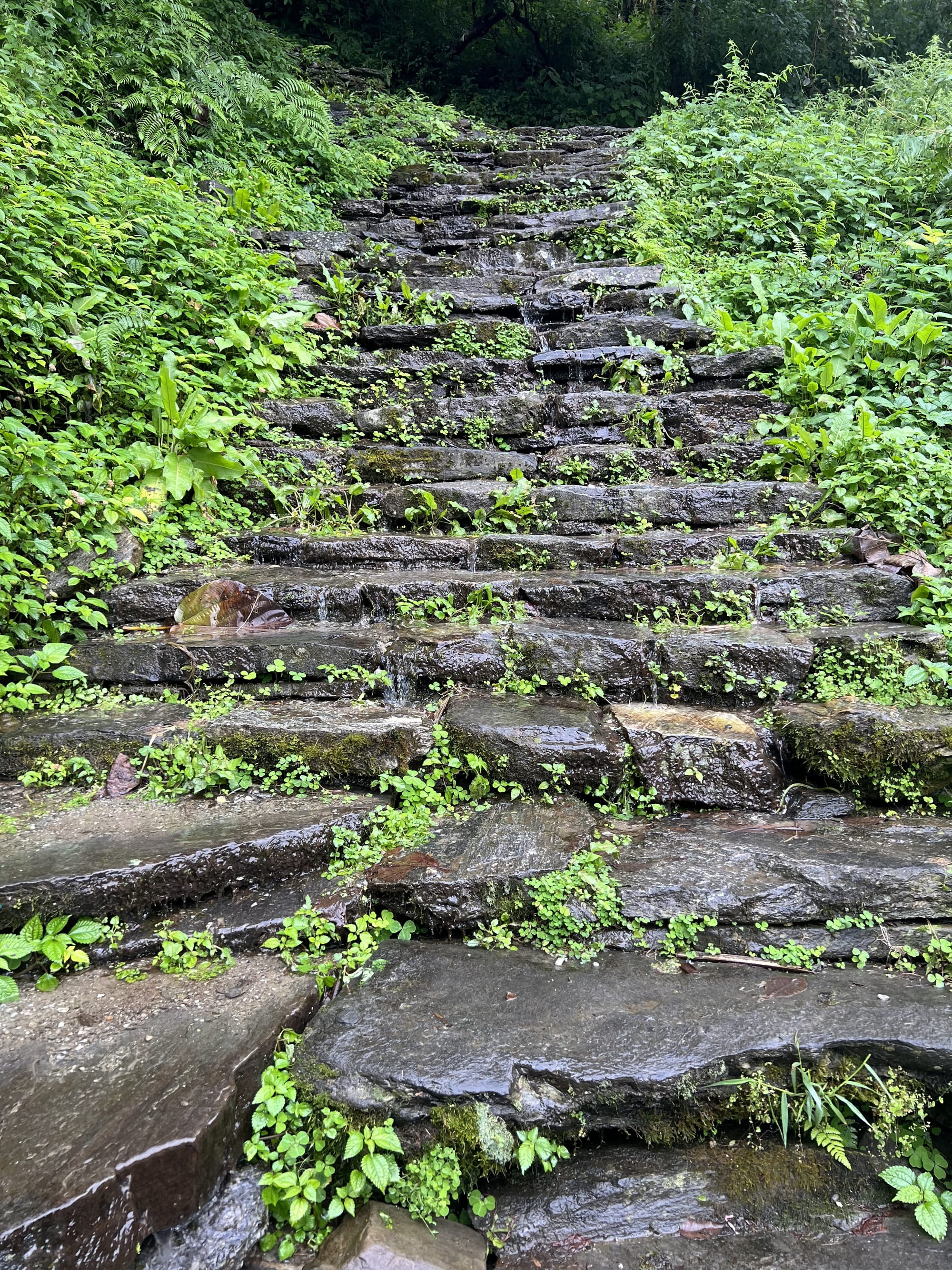
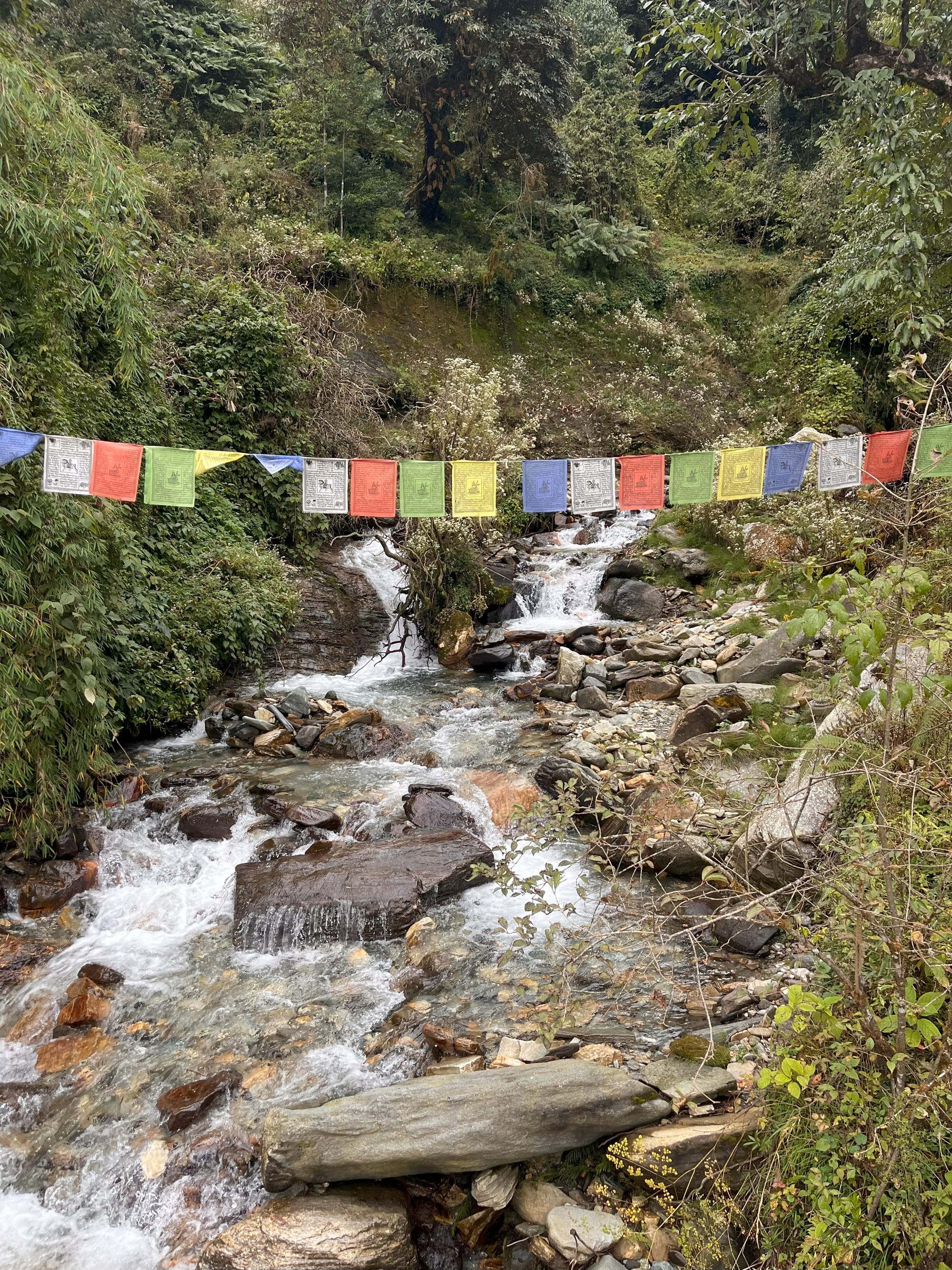
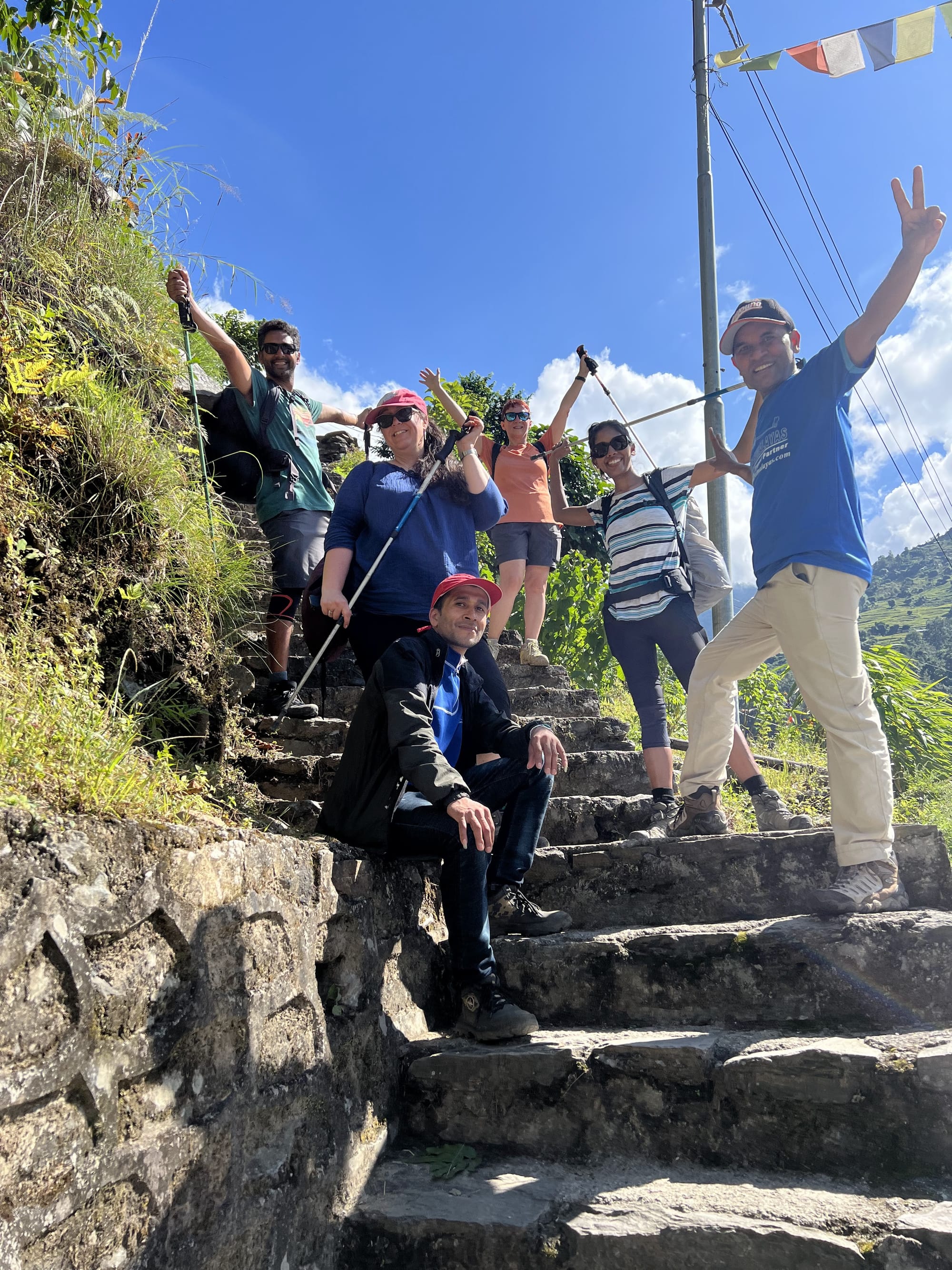
Slippery stone steps, waterfalls flowing across the trail, and a jubilant group making the final descent.
I was feeling pretty proud of myself on the last day’s descent, having avoided any major slips myself, but an encounter with a couple of local school children reminded me to keep my ego in check. I saw the elementary age pair in their school uniforms and asked if I could take their photo. They were happy to oblige, but I soon heard a loud mom voice speaking a language I didn’t know, but clearly understood, telling them to hurry up and not be late to school.
Before I could make it a few feet further down, they had sprinted beyond my sight in their flip-flops. I may have surprised myself with my ability to adapt to the challenging landscape, but I’ll never have the connection and casual ease they have navigating mountains.
But the “bistāri” mindset I'd learned on the trail helped me complete the final descent into Nayapul. And the lessons I’d learned about patience and community stayed with me long after I'd left the mountains behind.
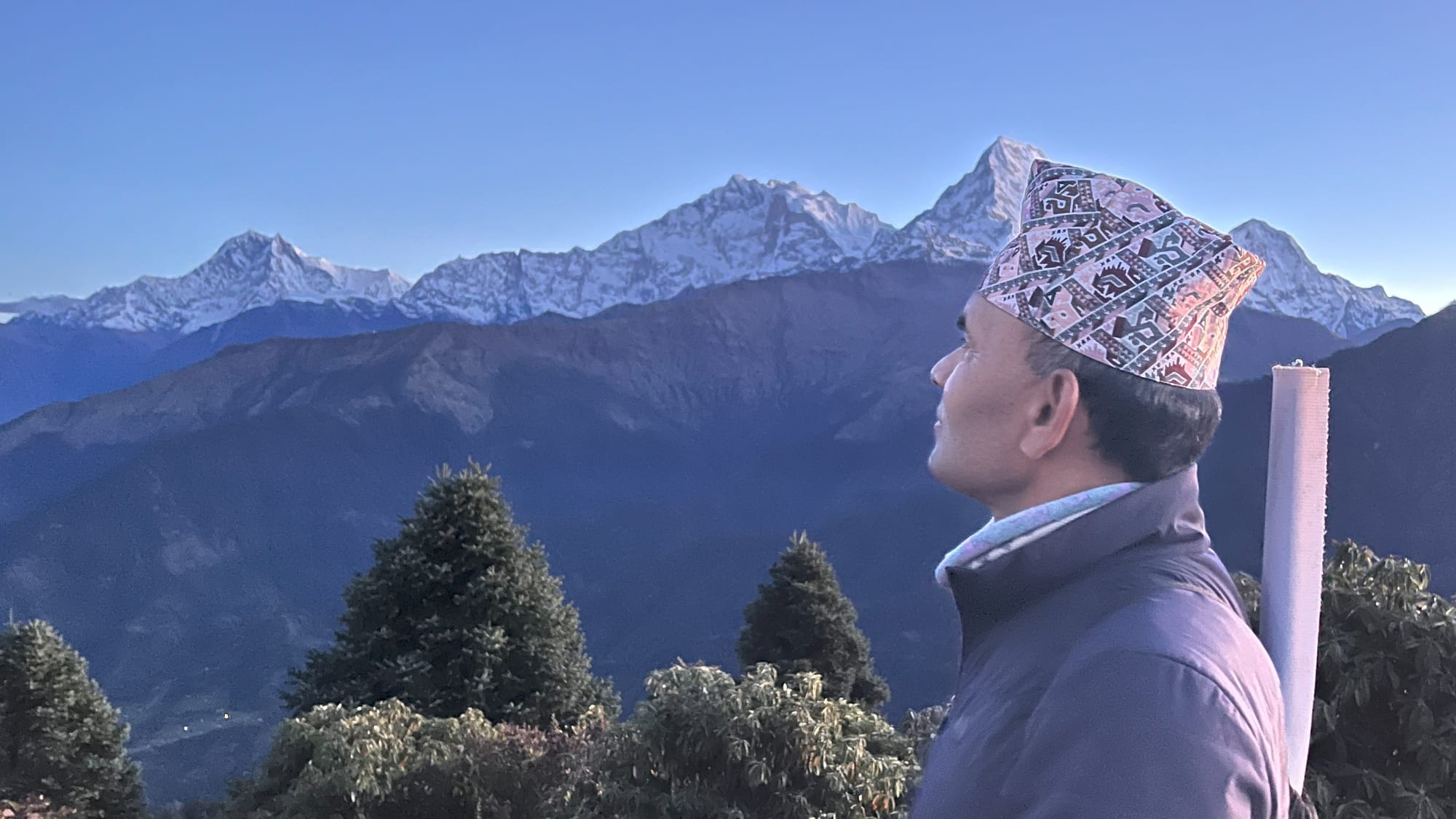
Learn more about Nepal, including the temples of Kathmandu and the Garden of Dreams.



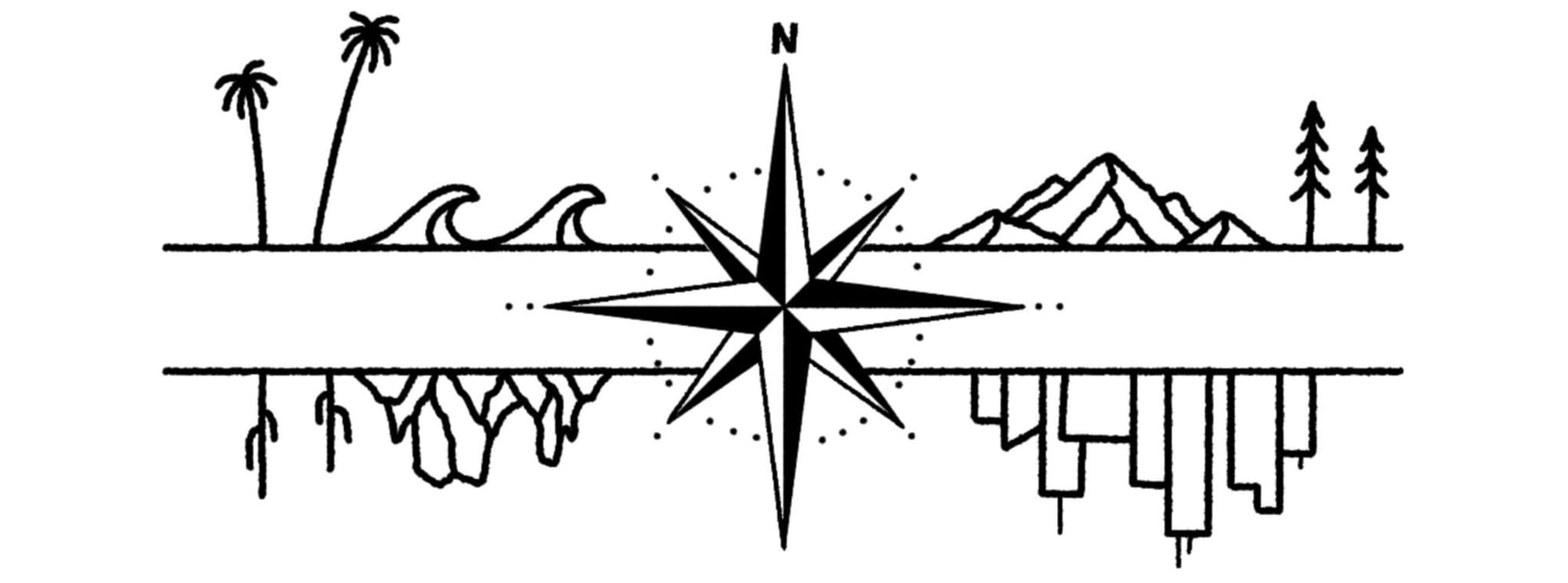
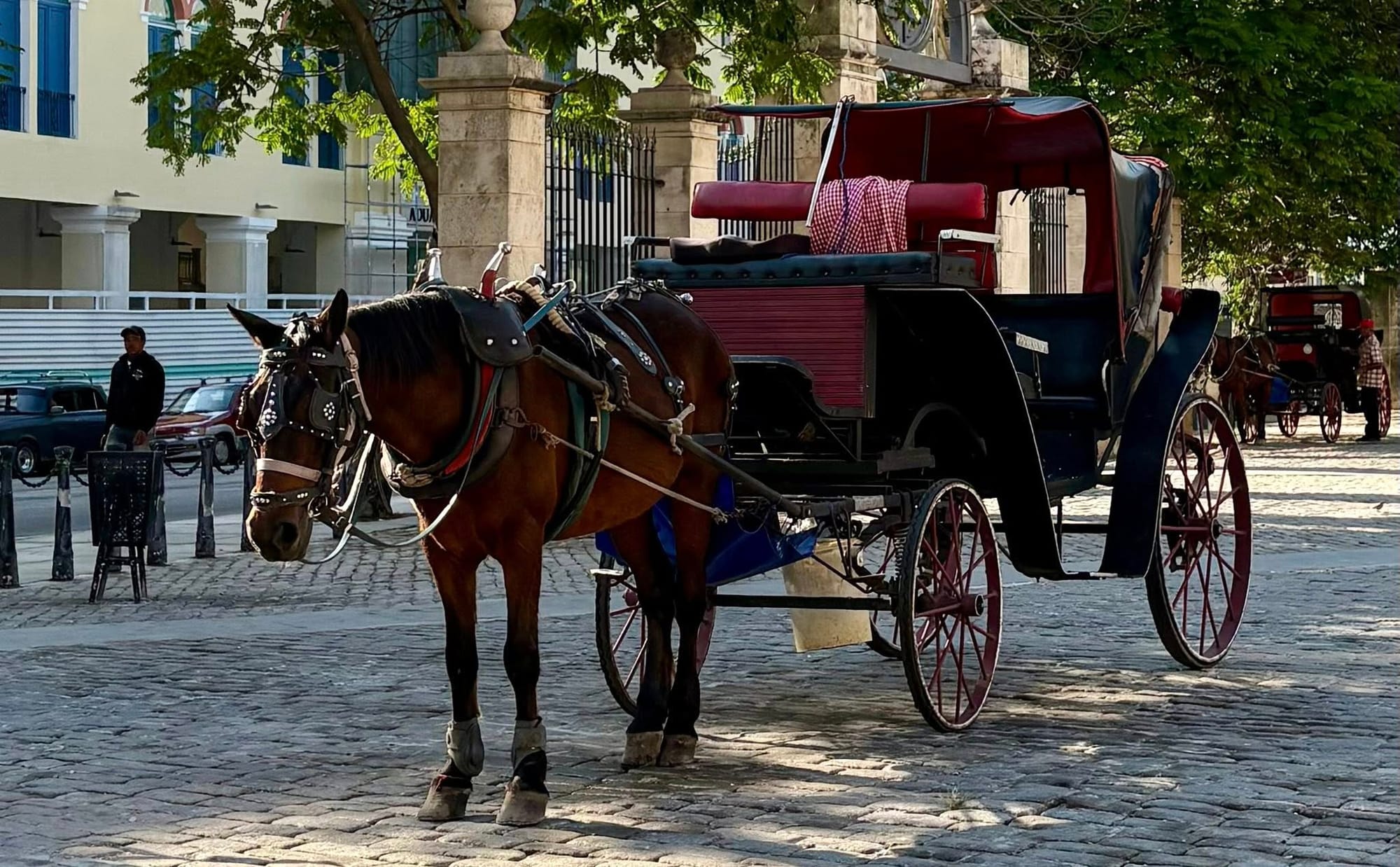
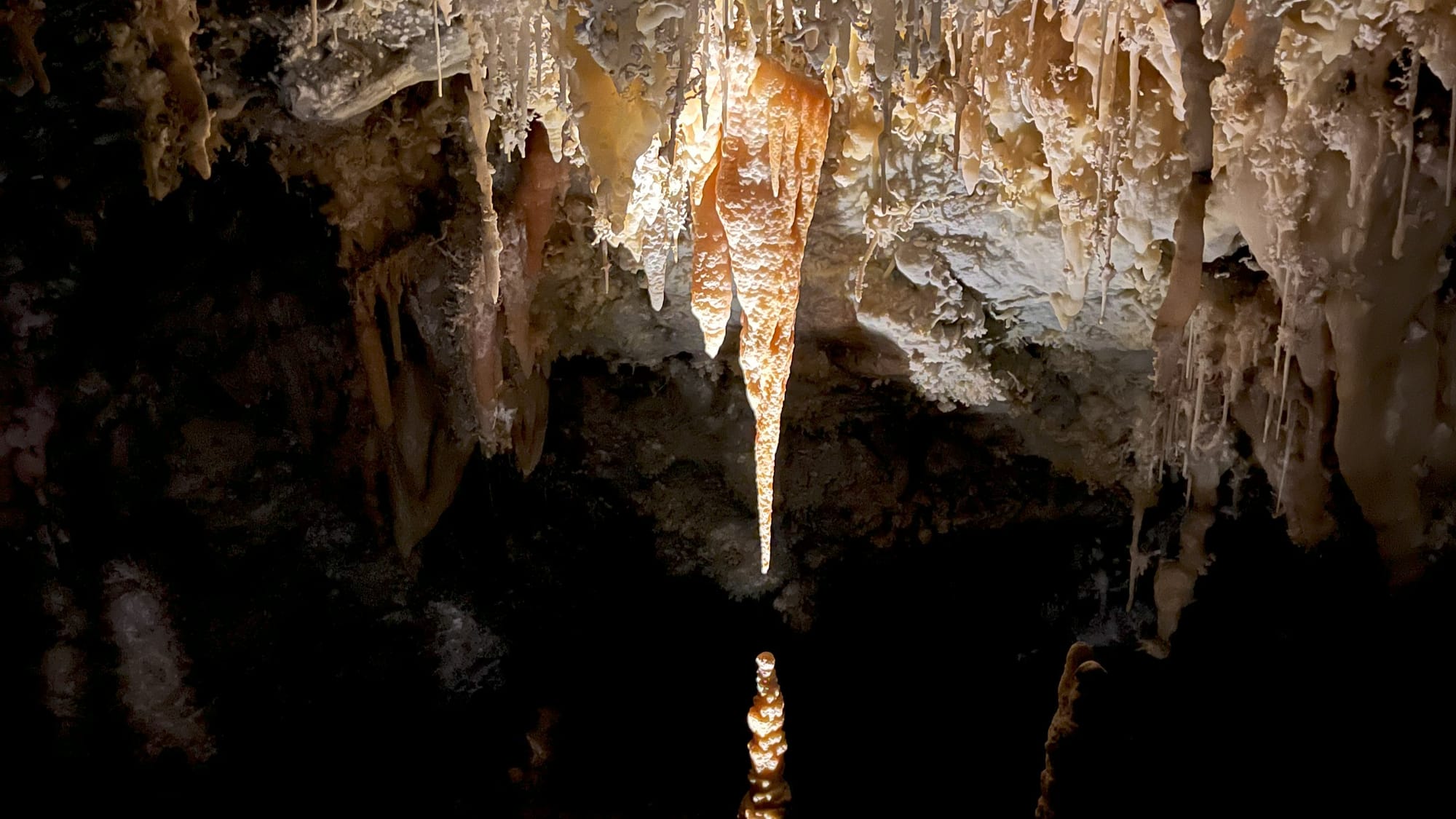
Comments